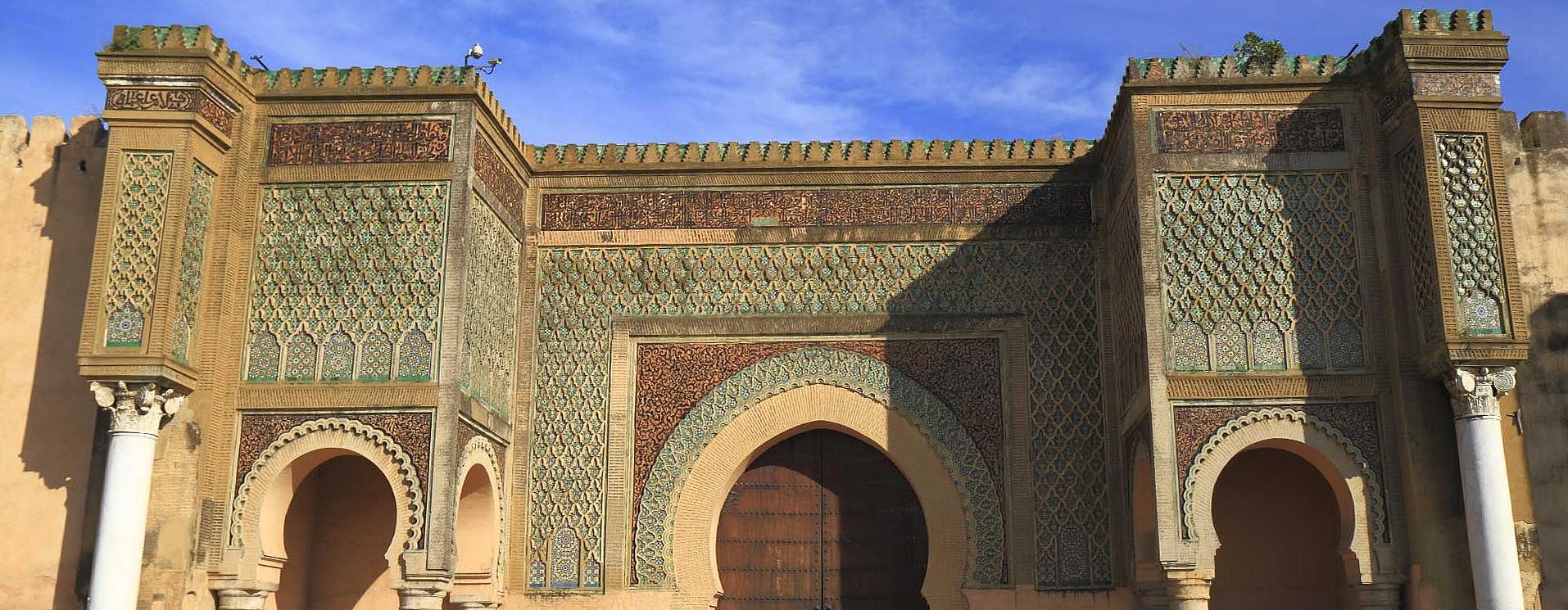What to see in Meknes, the least known imperial city

Tourist attractions
Meknès is a tourist city but it is also an important agricultural centre, mainly due to the production of oil and fruit, as well as its food and agriculture industries, wines, etc.
It is also a craft production centre. Damascenes, metal objects with silver thread incrustations, are very typical there. In the medina they also make carpets, tin plate products, mosaics, tiles and their famous wool.
The city is made up of the medina and the modern city, separated by the Bouferkrane River. The modern part has little of interest for tourists and took shape during the French protectorate. It's where the official buildings are, but there are also lots of restaurants and hotels.
The main festival in Meknès is the Mulud, a festival of the Aissawa religious brotherhood, attended by the devout from all over Morocco.
Getting to Meknès
There are two train stations, the smallest station is more in the centre of the new city, whilst the other is a little further to the east. The city is connected to most of the large cities like Marrakesh, Tangier, Rabat, Casablanca and Fez.
There is also a bus station and a "grand taxi" rank.
What to see in Meknès?
It's a touristy, monumental centre, its highlights being the medina and the Imperial City.
Meknès Medina
This is located to the west of the city in an elevated area separated from the new city by the Boufekrane River. It is surrounded by an imposing wall and has various gates. The best known and most impressive is the Bab Berdaine Gate.
Within the medina the Hedim Square is a real highlight, where the Bab el Mansour Gate is, built by Mulay Ismail in the 18th Century and beautifully decorated with tiles. Next to this is the Dar el Beida fortress, the military academy and the Museum of Art. This square is the centre of the old city and is full of cafés, restaurants and shops. It is a meeting place for locals and many tourists come here as there are sometimes different shows on.
There is also a souk where you'll find various different trades such as dyers, basket makers, blacksmiths and tailors. They are next to the Great Mosque which is the largest religious building in the city. It is of Almoravid origin from the 12th century and was renovated in the 14th century.
Don't miss the Bou Inania Madrasa, close to the Great Mosque, which is the city's most impressive historical monument for its beauty and age. It was built in the 14th century and it's well worth taking a walk around its courtyard.
The Imperial City
This is surrounded by around forty kilometres of walls built by the Sultan Mulay Ismail and has three precincts. The Mausoleum de Mulay Ismail, which is a tomb inside a highly decorated mosque with various rooms and a courtyard, is noteworthy.
It's also worth visiting the Agdal pond, with four hectares of water, which was used to irrigate the gardens and for the Sultan's entertainment.
Another place of interest are the granaries of Mulay Ismail and the old stables, which are huge halls that were used to store the city's food reserves and feed its army.
.
Shopping in Meknès
Meknès is one of Morocco's largest craft production centres. The best places to buy local crafts are the souks of the medina, around El Hedim Square, in the craft centre of the new Mellah and in various shops dotted around the city.
If you're looking for the best souvenir from Mekès, you should get a damascene, a metal object decorated with silver thread. There are beautiful vases, sculptures, plates, jewellery, etc.
There are also tinplate items, such as lanterns, daggers and doorknobs to decorate doors differently, at very good prices; wicker items, which people say are the best in the country in this area; and handmade textiles, such as fabric embroidered with bright colours, djellabas, kaftans, etc.
Another typical product is the wool that is used to make top quality carpets. These come in all shapes, colours and sizes and are all completely handmade.